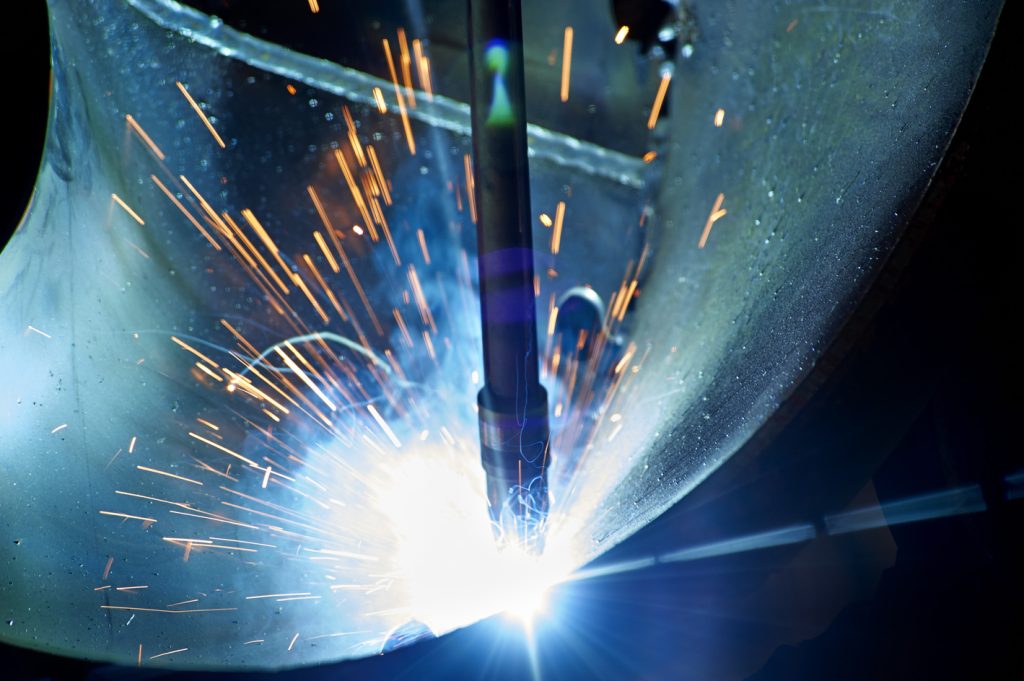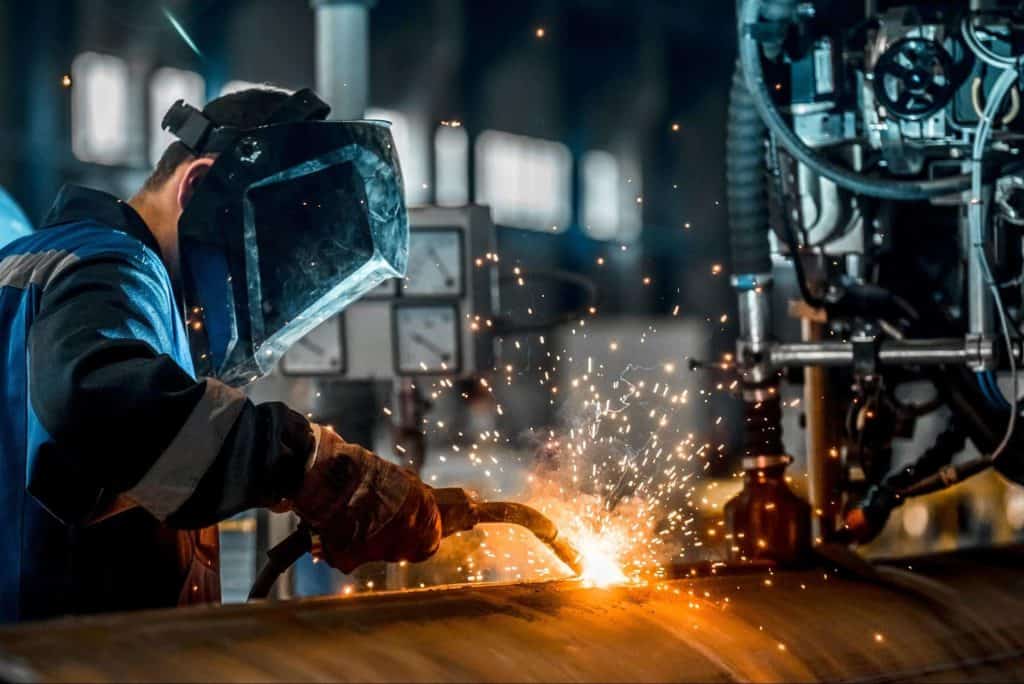How to Ensure Quality with Welding Inspection Gilbert Arizona: Best Practices
How to Ensure Quality with Welding Inspection Gilbert Arizona: Best Practices
Blog Article
Exploring the Relevance of Welding Assessment in Industrial Applications: Safeguarding Against Failings and Enhancing Longevity
Welding evaluation offers as a vital line of defense in industrial applications, making sure the architectural stability and integrity of bonded components. By methodically recognizing issues such as porosity and insufficient blend, examinations not only prevent failures however likewise expand the life expectancy of vital properties.
Duty of Welding Assessment
Welding inspection offers as a crucial guard in industrial applications, making certain that welded frameworks satisfy specified criteria of quality and safety. This procedure entails a systematic examination of welds to validate their integrity, toughness, and compliance with established codes and requirements. The role of welding assessment is multifaceted, including both aesthetic analyses and non-destructive screening approaches, which might consist of ultrasonic, radiographic, or magnetic bit screening.

In addition, welding evaluation plays an important role in regulative compliance. Ultimately, the duty of welding examination is essential in promoting security, improving efficiency, and securing financial investments in commercial facilities.
Usual Welding Issues

Among the most prevalent defects is porosity, characterized by small gas pockets entraped within the weld steel. This happens because of pollutants or improper shielding gas, endangering the weld's toughness. An additional substantial flaw is insufficient combination, where the weld metal fails to bond properly with the base product, possibly bring about architectural weaknesses.
Cracks can also develop throughout or after the welding procedure, frequently credited to thermal tensions or improper cooling prices. In addition, damaging, where the base metal is eroded along the weld grain, can deteriorate the joint and is typically brought on by extreme heat input or wrong method.
Additionally, lack of infiltration occurs when the weld steel does not get to the root of the joint, bring about insufficient toughness. Comprehending these common flaws is essential for inspectors and welders alike to ensure that welded frameworks meet security and performance requirements, inevitably avoiding prospective failures in industrial applications.
Advantages of Normal Assessments
Normal assessments function as an essential protect in making certain the dependability and long life of welded structures. These analyses identify prospective flaws and weak points that may jeopardize the stability of welds, permitting for timely remediation before problems rise. By implementing a structured examination routine, organizations can considerably decrease the danger of disastrous failings that might result in pricey downtime, tools substitute, or perhaps accidents.
In addition, normal inspections add to enhanced quality control throughout the welding process. By adhering to a consistent evaluation schedule, business can make sure that their welding methods meet recognized high quality standards and ideal practices. This not just promotes a culture of accountability however additionally motivates continual renovation amongst welding personnel.
In addition, routine evaluations assist in much better maintenance preparation. By identifying damage early, organizations can tactically set up substitutes and repairs, minimizing interruption to procedures. This positive approach ultimately results in extensive property lifespan and improved total productivity.
Lastly, a commitment to normal inspections can boost a business's online reputation in the market. Customers and stakeholders progressively value organizations that focus on safety and security and top quality, thereby improving trust and possibly resulting in raised company possibilities.
Sector Standards and Regulations
Following industry criteria and policies is an essential element of welding assessment that matches the benefits of routine evaluations. These criteria, established by companies such as the American Welding Culture (AWS) and the American Culture of Mechanical Engineers (ASME), supply a framework for More Bonuses best methods in welding procedures, materials, and assessment methods. Conformity with these guidelines makes certain that welds satisfy the called for high quality and Visit This Link security standards, considerably decreasing the risk of structural failings.
Governing bodies like the Occupational Safety And Security and Health Management (OSHA) further apply standards that safeguard employees and the atmosphere during welding procedures. By adhering to these developed standards, industries can boost the dependability of their elements and structures, guaranteeing they carry out as planned under numerous operational conditions.
Additionally, adherence to sector criteria cultivates uniformity in quality control, assisting in smoother communication amongst stakeholders and governing firms. This alignment not just lessens obligation threats but also boosts the credibility of companies in open markets. Ultimately, conformity with welding requirements and policies is not merely a legal obligation; it is a crucial financial investment in safety and security, performance, and lasting operational success.
Future Trends in Welding Inspection
As industries proceed to advance, the future of welding assessment is poised to integrate sophisticated technologies that boost accuracy and performance. Among one of the most substantial trends is the fostering of automation and robotics in examination processes. Automated systems can carry out assessments rapidly, lowering human error and boosting throughput in manufacturing environments.
Moreover, the combination of artificial intelligence (AI) and device knowing algorithms will allow predictive analytics, permitting real-time evaluations and positive maintenance (Welding Inspection Gilbert Arizona). By evaluating information from previous evaluations, these modern technologies can determine patterns that could indicate potential failings, thus expanding the life expectancy of welded elements

In addition, the trend towards digitalization will bring about boosted data management systems that facilitate far better monitoring, reporting, and compliance with industry standards. In summary, the future of welding examination is defined by technical developments that guarantee to substantially boost integrity, security, and operational efficiency in various commercial applications.
Conclusion
In verdict, welding evaluation serves an essential feature in making certain the integrity and resilience of bonded frameworks throughout different industrial applications. As developments in technology proceed to evolve, the future of welding evaluation promises increased accuracy and efficiency, ultimately adding to the long life of crucial infrastructures.
Welding evaluation serves as an important line of protection in industrial applications, guaranteeing the structural honesty and dependability of bonded components.Welding assessment offers as an essential protect in industrial applications, guaranteeing that bonded structures satisfy specified requirements of high quality and safety - Welding Inspection Gilbert Arizona. Inevitably, the function of welding evaluation is important in advertising safety and security, improving performance, and securing financial investments in commercial framework
These standards, developed by organizations such as the American Welding Society (AWS) and the American Society of Mechanical Engineers (ASME), supply a framework for finest techniques in welding procedures, products, and examination strategies.In verdict, welding assessment serves a crucial feature in ensuring the stability and toughness of bonded frameworks throughout various commercial applications.
Report this page